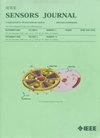Pioneering Wearable Sensor-Driven Health-Monitoring System for Contagious Disease Prevention With Intelligent Crowd-Counting Models
IF 4.3
2区 综合性期刊
Q1 ENGINEERING, ELECTRICAL & ELECTRONIC
引用次数: 0
Abstract
Contagious diseases such as COVID have significantly increased the need for personal health-monitoring systems through wearable devices. This article presents a model based on wearable devices for a health-monitoring system that aims to assist Hajj and Umrah pilgrims with tracking their vitals and providing them with safety advice. Using an advance deep reinforcement learning (DRL) model called deep Q network (DQN) helps to make adaptive decisions on alerts based on the context and historical data records of individual health records and mitigates false alarms. Wearable wristbands equipped with different types of sensors such as temperature, SPO2, time of flight (ToF), and heart rate sensors are employed. The data accumulated from sensors are analyzed periodically for density estimation and safety classification. The classification is based on the level of a threshold. The threshold level is determined based on the distance between persons and the number of persons. The analysis of the sensed data recommends a safe distance (SD) for person-to-person interaction and provides self-assisted health monitoring. The system is evaluated in different intervals between 5 and 60 min. Results reveal that the proposed model effectively improves the data analysis rate by 14.58%, density detection by 16.12%, recommendations by 15.79%, and distortion error by 11.57%.开创性的可穿戴传感器驱动的传染病预防健康监测系统,具有智能人群计数模型
COVID等传染病大大增加了通过可穿戴设备对个人健康监测系统的需求。本文介绍了一种基于可穿戴设备的健康监测系统模型,旨在帮助朝觐和朝觐朝圣者跟踪他们的生命体征,并为他们提供安全建议。使用一种称为deep Q network (DQN)的高级深度强化学习(DRL)模型,有助于根据上下文和个人健康记录的历史数据记录对警报做出自适应决策,并减少假警报。配备了温度、SPO2、飞行时间(ToF)、心率传感器等不同类型传感器的可穿戴腕带。从传感器收集的数据进行周期性分析,用于密度估计和安全分类。分类是基于阈值的水平。阈值水平是根据人与人之间的距离和人数来确定的。对感测数据的分析建议为人与人之间的互动设置安全距离(SD),并提供自助健康监测。在5 ~ 60 min的不同时间间隔内对系统进行了评估。结果表明,该模型有效地将数据分析率提高了14.58%,密度检测率提高了16.12%,推荐率提高了15.79%,失真误差降低了11.57%。
本文章由计算机程序翻译,如有差异,请以英文原文为准。
求助全文
约1分钟内获得全文
求助全文
来源期刊

IEEE Sensors Journal
工程技术-工程:电子与电气
CiteScore
7.70
自引率
14.00%
发文量
2058
审稿时长
5.2 months
期刊介绍:
The fields of interest of the IEEE Sensors Journal are the theory, design , fabrication, manufacturing and applications of devices for sensing and transducing physical, chemical and biological phenomena, with emphasis on the electronics and physics aspect of sensors and integrated sensors-actuators. IEEE Sensors Journal deals with the following:
-Sensor Phenomenology, Modelling, and Evaluation
-Sensor Materials, Processing, and Fabrication
-Chemical and Gas Sensors
-Microfluidics and Biosensors
-Optical Sensors
-Physical Sensors: Temperature, Mechanical, Magnetic, and others
-Acoustic and Ultrasonic Sensors
-Sensor Packaging
-Sensor Networks
-Sensor Applications
-Sensor Systems: Signals, Processing, and Interfaces
-Actuators and Sensor Power Systems
-Sensor Signal Processing for high precision and stability (amplification, filtering, linearization, modulation/demodulation) and under harsh conditions (EMC, radiation, humidity, temperature); energy consumption/harvesting
-Sensor Data Processing (soft computing with sensor data, e.g., pattern recognition, machine learning, evolutionary computation; sensor data fusion, processing of wave e.g., electromagnetic and acoustic; and non-wave, e.g., chemical, gravity, particle, thermal, radiative and non-radiative sensor data, detection, estimation and classification based on sensor data)
-Sensors in Industrial Practice
 求助内容:
求助内容: 应助结果提醒方式:
应助结果提醒方式:


